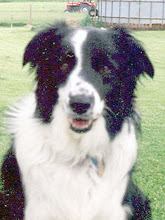Tuesday, November 9, 2010
Fall Hooves
The staccato pop, pop, pop fills the warm afternoon air. The farrier is trimming the horses' hooves and I'm glad he's operating the nippers, not I.
Our rainfall has totaled less than four inches since mid-July, leaving the ground dry, the grass parched, and the hooves hard and difficult to trim.
My horses spend several hours each day grazing the pastures. During most years, this helps keep their hooves moist and strong. Their hooves move over dew-covered grass, soaking in some of the moisture. Since mid-summer, the dew covered mornings have diminished.
When the farrier arrives, he finds horses with cosmetic chipping and little growth. Over the years, I've noticed that the hooves grow fastest in the spring when the pastures are growing and coming on fast. They slow as fall approaches, and slow more over winter when they're eating mostly hay.
The farrier says that trimming requires a little more muscle power these days.
I know what he means. Over the weekend, I helped a friend trim sheep hooves. The advantage of doing this during a dry spell is no mud. The disadvantage is harder hooves that take more muscle to cut.
Because of the dry ground, we won't be trimming our sheep this fall. They've worn them down on their daily treks over the hard clay soil to the alfalfa field.
Subscribe to:
Post Comments (Atom)













I cancelled our farrier for this week, just nothing much needed and a waste of my time and money. With the mini gone now, hoof trimming timing will change.
ReplyDelete